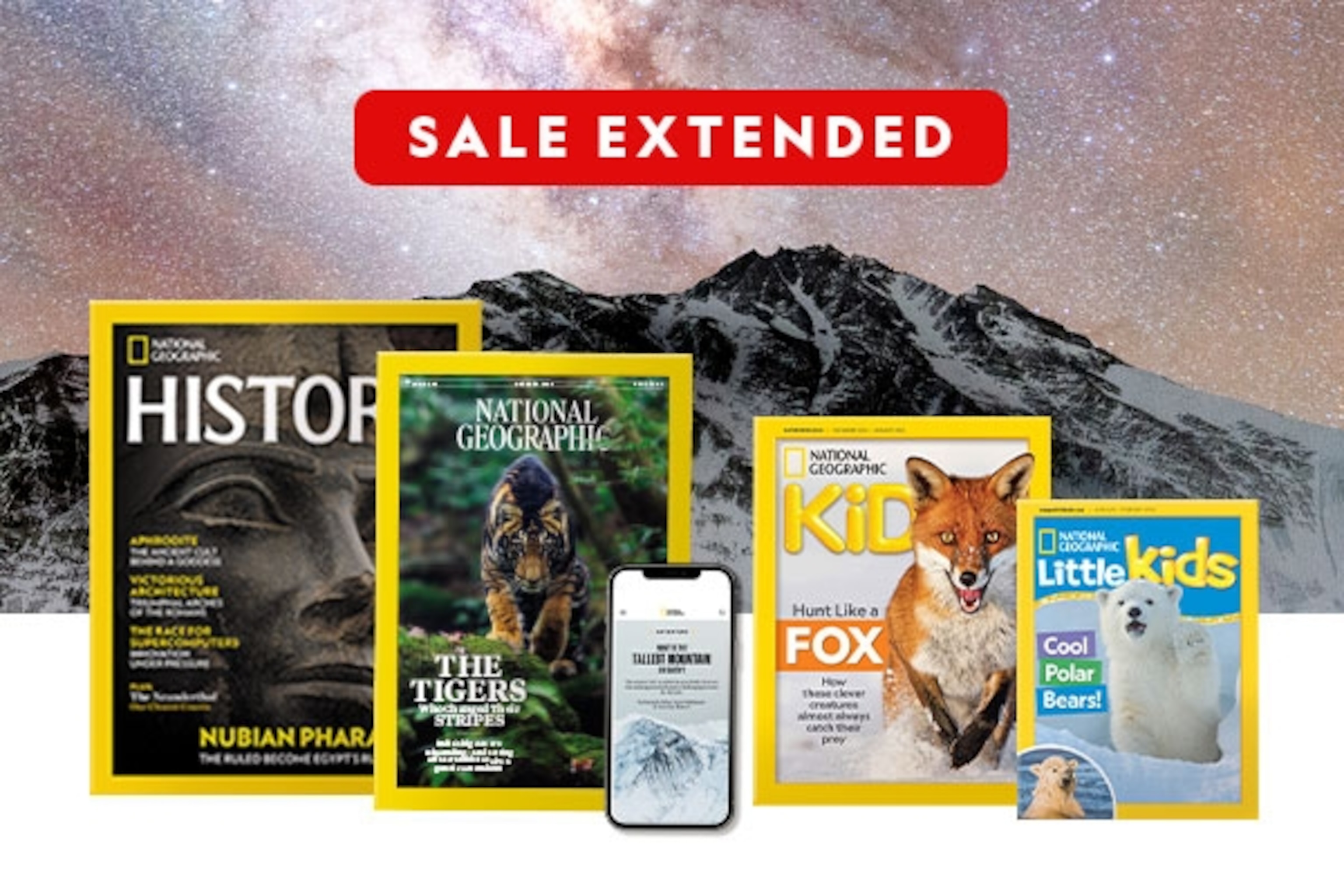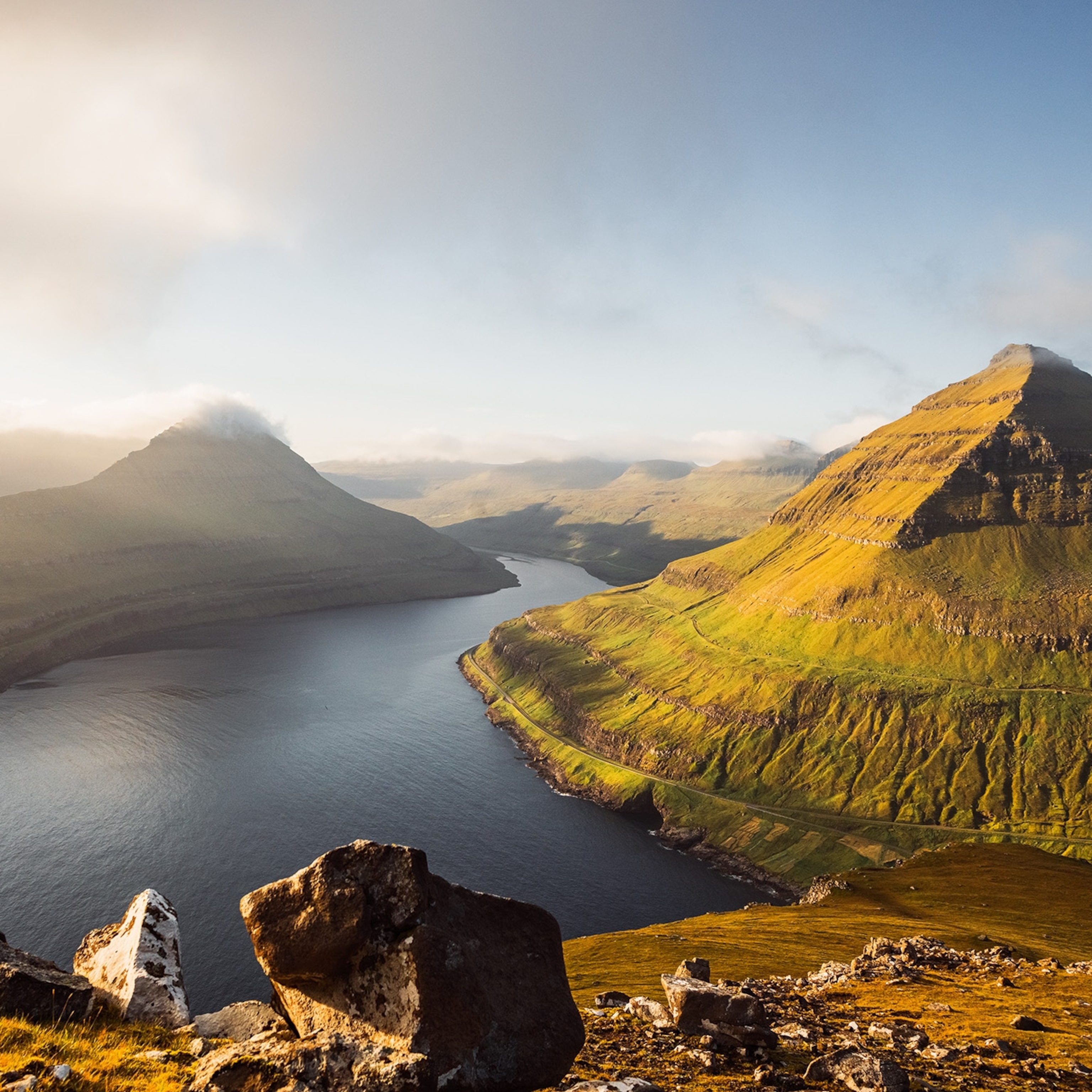Edge of the World
Scotland’s Hebrides, islands both stern and sublime, have taught centuries of artists, scientists, poets, and travelers to treasure the wild.
Michael Robson fell in love in 1948—with a place he'd never been.
An illustrated magazine swept the young boy's imagination from the familiar domesticity of his English home to the wild islands that rise in jagged ranks off Scotland's northwest coast. As soon and as often as he could, first on school holidays and later on breaks from work, Robson surrendered to the call of the Hebrides, making long journeys from the mainland by steamer and bus, by small boat and on foot, venturing from the mountains of Skye to the moors and sea lochs of Lewis and Harris and even farther, across miles of ocean to a rocky speck of land where the last permanent settlement had been abandoned a century before.
More than 500 islands and islets make up the Inner and Outer Hebrides. Often cloaked in mist and rain and nearly always wind-scoured, they're surrounded by waters temperamental enough to test the most skilled captain, seas that can vary in a day from a silken ripple of improbably tropical blue to a roiling assault of gunmetal and spume. For thousands of years humans have struggled to survive here. Even so, Celts and Vikings, then Scots and English, fought to rule these shores. Today only a few dozen of the Hebrides are inhabited. "The islands are a challenge," Robson says. "Some visitors call them bleak, but that just means they're not really paying attention."
Between battles the isles got precious little attention. The famously cranky 18th-century London intellectual Samuel Johnson declared that mainlanders to the south knew no more of them than they did "of Borneo or Sumatra." What little was written focused on "improving" the islands: What crops could be grown? What resources exploited? How large a population could the various islands support, and what sort of rents could they generate for their landlords? Johnson mostly filled the journal of his Hebridean journey with complaints about the difficulties of travel and the rustic accommodations that he endured.
But even as Johnson grumbled, a different set of ideas about the value of rugged places was gaining importance. Scottish Enlightenment thinkers, particularly philosopher David Hume and geologist James Hutton, unshackled intellect from piety, insisting that the ways of the world be learned by direct experience, rather than by reference to ancient and sacred authorities. To these men nature was not merely a wilderness to be tamed; it was the Earth's own textbook.
Some of its most dramatic pages were read on the Hebrides. In 1800 geologist Robert Jameson (who later served as Charles Darwin's professor at the University of Edinburgh) published Mineralogy of the Scottish Isles in two volumes, offering detailed descriptions of hundreds of Hebridean sites. On Islay, Jameson noted shell deposits far from the highest tides: "proofs," he wrote, "of the retiring of the sea from the land." Scientists now know that these fossil beaches, elevated as much as 115 feet above the present waterline, record the passing of the last great ice age. As glaciers blanketing the island began to melt 15,000 years ago, relieving it of the huge weight of ice, the land began to rebound, eventually lifting the coastline high and dry from the sea.
On Skye, Jameson declared that "this island appears, at some former period, to have been very much exposed to violent convulsions." The spiky arc of the Black Cuillin range, rising more than 3,000 feet above sea level, is indeed the remains of a volcano. The outer structures have long since disappeared, revealing the stark and convoluted shape of the deep magma chamber that seethed here 60 million years ago.
Jameson stopped short of the westernmost isles, so he missed the chance to catalog the striped and mottled rock that forms the foundation of the Outer Hebrides. Named for the Isle of Lewis, where it was first described, Lewisian gneiss was born from volcanic activity deep in the crust more than three billion years ago. Intensively and repeatedly altered, lifted up by complex tectonic shifts, and revealed by massive erosion, it is the oldest rock in the British Isles and among the oldest in Europe.
Perhaps the most evocative place to encounter Lewisian gneiss is in the great stone circle at Callanish, overlooking Loch Roag on Lewis. Erected between 4,500 and 4,900 years ago, the Callanish stones may have been standing longer than the central ring at Stonehenge. Little is known for certain of the builders beyond their obvious engineering prowess, but it seems fitting that one of the earliest monuments to the human occupation of the Hebrides should have been crafted of this immensely old rock. Other standing stones dot the isles, along with Bronze Age burial cairns and stout Iron Age fortifications—most likewise built from Lewisian gneiss. The crumbling remains summon up the spirits of mighty warriors, the terror of villagers attacked from the sea, and the determination of farmers, shepherds, and fisherfolk to make their homes on the edge of the world.
The romance of these brooding ruins speaks powerfully to Michael Robson. The old tales, he says, "however extravagant and impossible at times, often have a measure of authenticity about them." Like the Enlightenment zeal for observation, the Romantic sensibility is an inheritance from the 18th century, and the Hebrides were among its touchstones. British inventiveness had fueled a nascent industrial revolution—and generated brutal levels of noise, pollution, and crowding. For an increasingly mechanized, urbanized world, nature became a refuge, a place for contemplation and inspiration with sublime power to transform emotions as well as thoughts. "Every valley has its battle, and every stream its song," declared Sir Walter Scott, whose novels and poems gave voice to wild Scotland. Even resolutely rational Robert Jameson assured readers that he was not "insensible to the emotions which naturally arise from the retired and striking scenes which often burst upon me."
The scene widely regarded as the most striking in all the isles was discovered in 1772 by English naturalist Joseph Banks. On his way to Iceland via the Hebrides, Banks had visited the diminutive island of Staffa and found in its southwest part "the most remarkable pillars." Now known to be the remains of colossal volcanic eruptions that began to tear open the North Atlantic Ocean Basin some 60 million years ago, the towering columns of basalt formed one magnificent spectacle after another as the explorer's party moved along the shore. Grandest of all was the great sea cavern Banks called the Cave of Fingal. Fingal was the hero of an epic poem that Scotsman James Macpherson claimed he had translated from verses written by an ancient Gaelic bard named Ossian—Britain's own Homer. Evoking a mythic past, the epic—eventually revealed to be largely Macpherson's composition—had ignited a romantic fascination with the misty landscapes of Britain's north.
With its entrance more than six stories high, the columned hollow of Fingal's Cave extends back some 230 feet and resounds with the rush of the sea. "Compared to this," Banks declared, "what are the cathedrals or the palaces built by men!" Of course, the Englishman had not truly discovered anything: Gaelic-speaking islanders knew how the cavern echoed the thunder of the waves and called it Uamh Binn, the "melodious cave." But Banks's own prominence assured his report wide attention, and by linking the geologic wonder to the popular Ossian poems, Banks helped make the cavern a must-see.
The moment was right. Illustrated travel books became cheaper as durable steel engraving plates replaced softer copper ones, making larger print runs possible. New roads and steamboat services made island journeys easier. Years of Napoleonic Wars made travel on the Continent nearly impossible for Britons, but the Hebrides were exotic and—with an adventurous dash of effort—accessible.
Fingal's Cave was on the itinerary of the German composer Felix Mendelssohn and his companion Karl Klingemann in the summer of 1829. The Hebrides affected the young musician "extraordinarily," he wrote home to his family in Berlin. On August 8, the two travelers sailed from Mull to Staffa. They'd seen the cave "in all the picture books," Klingemann noted, but the real thing still had the power to amaze: "A greener roar of waves never rushed into a stranger cavern," he went on, "its many pillars making it look like the inside of an immense organ, black and resounding, absolutely without purpose, and quite alone, the wide gray sea within and without." In his Hebrides Overture, begun on the journey, Mendelssohn created what Duke University music historian R. Larry Todd calls "romantic tone painting at its purest."
The sea was not in a collaborative mood the day celebrated English painter J. M. W. Turner took ship for Fingal's Cave in August 1831. "It is not very pleasant or safe when the wave rolls right in," Turner wrote. The steamer Maid of Morven could not land her passengers, so a few hardy souls, Turner included, rode a small pilot boat to the cave's entrance and leaped from the deck to slippery rocks. In the painting that records Turner's wild journey, the cave and its great basalt columns are barely visible. The canvas is all heaving waves and incandescent sky, with the ship steaming determinedly but nearly overwhelmed by the elements.
There are some places so wild, it seems, that even the sturdiest humans cannot always endure their challenges. St. Kilda, a tiny cluster of islands and sea stacks perched in the North Atlantic 40 miles west of North Uist, was occupied for more than 4,000 years. A small community once huddled around the curve of Village Bay on Hirta, the largest island. Sheep grazed steep slopes all around. Modest crops of barley, oats, and potatoes were grown in raised beds, where thin soil was carefully augmented with applications of mineral-rich seaweed. Winter storms, rolling unchecked across thousands of miles of open ocean, struck the islands with almost unimaginable ferocity. In 1852, 36 islanders—roughly a third of the population at that time—chose a long and arduous journey to Australia over remaining on St. Kilda. Many perished at sea.
By 1930, the 36 remaining residents had had enough. They petitioned the government to evacuate them from their homes. On August 29, the St. Kildans and most of their livestock took ship for the Scottish mainland. Declared a UNESCO World Heritage site in 1986, the islands now belong to the birds that sweep and soar along their plunging cliffs, and people are the migratory visitors.
As a young man, Michael Robson crossed the 40-odd miles of open North Atlantic from Lewis to the lone island of Rona, another abandoned outpost. Lying in the open in the bright summer nights, he listened to the cries of seabirds that nest by the thousands on Rona each year. He came on signs of long-vanished human occupants, from ruined stone huts that had sheltered eighth-century Christian hermits to worn stones that later occupants had used to grind grain. None of Rona's settlements lasted: The harsh conditions overcame each isolated group in turn.
Robson finally settled on Lewis 16 years ago and has opened his collection of Scottish history and lore—books, manuscripts, and maps—to the public. He retains the lean frame of the self-sufficient outdoorsman, his blue-eyed gaze direct and his prodigious memory sharp. But he is no longer young. His hands tremble sometimes as he gestures, telling a Hebridean tale. His journeys are less rigorous now, but he has not stopped seeking places, bleak to some, that for him are steeped in meaning. "The essence of the islands is something you only discover over a long period," he says at last. "I won't have time to learn it all."























